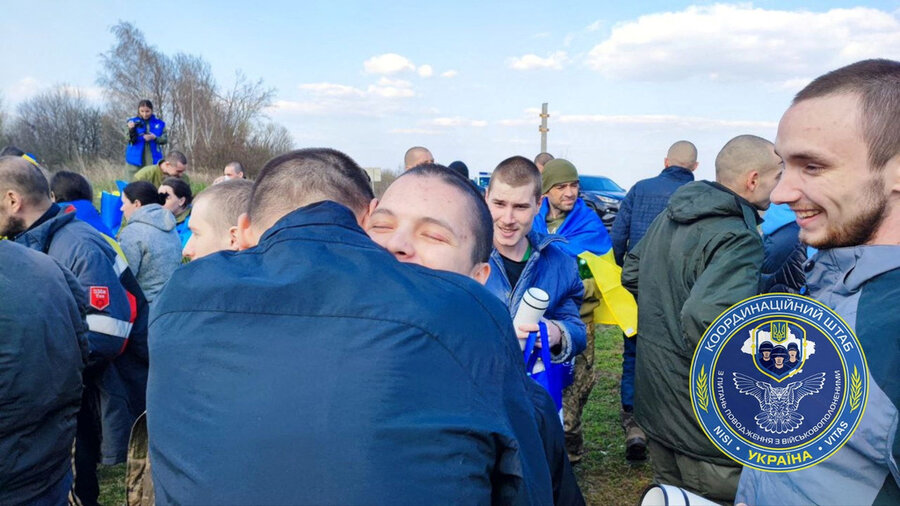The worst of war violence versus the best of humanity
Loading...
Russia and Ukraine rarely agree on much these days. Yet this week, after the release of two videos on social media that appeared to show Russian forces had beheaded three captured Ukrainian soldiers, the two countries seemed to find common moral ground. Each launched an investigation of the videos.
The Kremlin said they were “awful.” Russia’s Prosecutor General’s Office promised to verify their authenticity and then “make an appropriate decision.” Ukraine called on the International Criminal Court to investigate and opened its own war crimes probe.
The gruesome nature of decapitation – a brutality associated more with terrorist groups – may account for Russia’s apparent concern. The videos could push Russian opinion against the war and further unite the Ukrainian people. Such reactions would reaffirm the modern legal norms that wars must have humanitarian limits and that combatants in a conflict must protect civilians, the wounded, and prisoners of war.
Both Ukraine and Russia are among nearly 200 countries that are party to the Third Geneva Convention, the international law that dictates rules on the treatment of POWs. Yet Russia has largely ignored many of the Geneva Conventions since the invasion, especially in bombing civilian targets, executing civilians in captured towns, and taking Ukrainian children to Russia. Ukraine has committed similar atrocities but not nearly as many. And more importantly, it is investigating them.
Shocking violence can sometimes change the course of a conflict. The My Lai massacre of Vietnamese civilians by U.S. soldiers in 1968 shifted American opinion of the Vietnam War. In 2005, Al Qaeda told its branch in Iraq to stop its frequent beheadings. Videos of those acts were losing “Muslim hearts and minds,” said a leader of Al Qaeda. Many Islamic scholars also weighed in against such violence.
Beheadings during a war may be aimed at instilling fear, but they can also create a response that helps limit the war by affirming moral guardrails. That response is based on the presumed innocence and dignity of civilians or captured soldiers.
If the Kremlin does now seek to adhere to the rules of war, it would be a recognition that Russia must still exist within a moral community, one based on humanitarian law with the idea that what unites people is far stronger than what divides them. War needs limits because of the infinite good within humanity.





